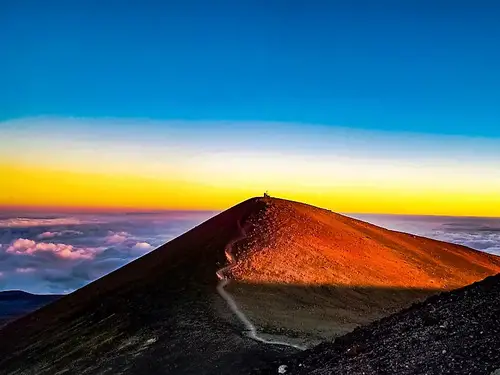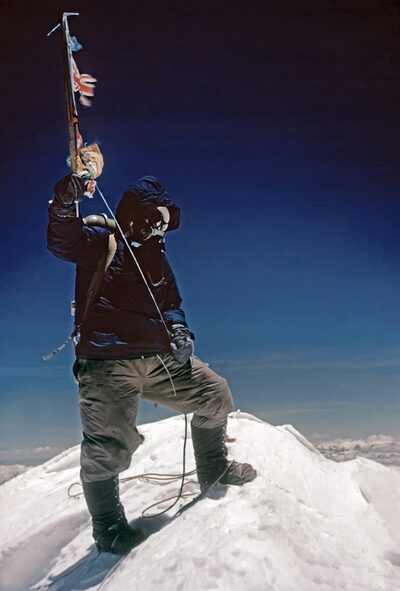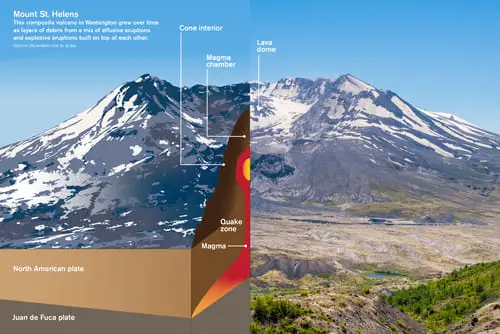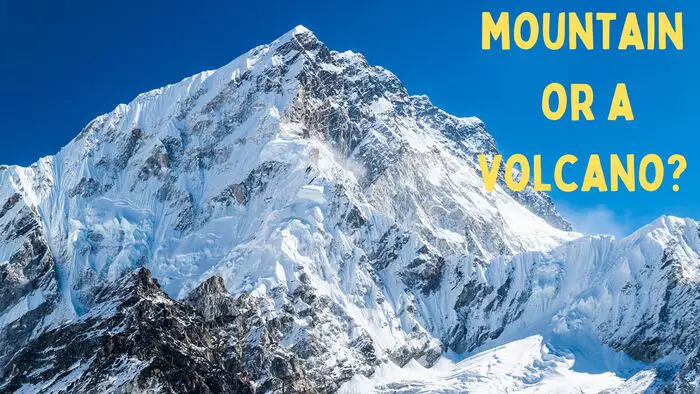No, Mount Everest is not a volcano. Everest is a folded mountain formed by the Indian and Eurasian plates colliding together approximately 60 million years ago.
Mount Everest, the highest mountain in the world, stands at an impressive 8,848 meters (29,030 ft) high. Unlike volcanic mountains, which form from molten rock erupting through the earth’s crust and piling up on itself, Everest was formed through the collision of two tectonic plates – the Indo-Australian and Eurasian plates.
Mount Everest will never erupt. It is composed of sedimentary and metamorphic rock that originated from the downward fold of the earth’s crust under the Tethys Sea. The majestic Himalayas, including Mount Everest, came into existence over hundreds of millions of years due to the gradual collision of the Indo-Australian and Eurasian plates.
What is a Volcano?

A volcano is a special opening in the ground of a planet or moon that can spew out hot, melted rock, gases, and other materials. Sometimes, these volcanic materials pile up and create a hill or mountain.
Volcanoes are divided into three types: active, dormant, and extinct. Active ones have erupted recently and might erupt again in the future. Dormant ones haven’t erupted in a long time, but they could erupt again someday. Extinct volcanoes, on the other hand, are not expected to erupt ever again.
Mountain vs Volcano: What is the Difference?
Mountains and volcanoes have some similarities, but the main difference lies in how they are formed and what they are made of. Volcanoes are a specific type of mountain that has magma, a crater, and lava, while regular mountains are usually covered with snow.
Mountains offer peaceful and beautiful views, but volcanoes are dangerous and not safe to stay near. Mountains consist of sedimentary and metamorphic rocks like sandstones, limestones, and shale, while volcanoes contain molten rock called magma.
So, we can understand that “all volcanoes are almost like mountains, but not all mountains are volcanoes.” Mount Everest itself is not a volcano, even though there are volcanoes nearby.
Mount Everest – Mountain or a Volcano?

No, Mount Everest is not a Volcano. Situated in the Himalayan mountain range, Everest stands proudly as the highest peak in the world. The mountain’s formation occurred when two of the Earth’s tectonic plates collided, pushing up the rock to create this majestic summit.
Even though there are signs of past volcanic activity in the region, Mount Everest itself is not a volcano. Today, it serves as a habitat for various wildlife, including snow leopards, red pandas, and numerous bird species.
Enthusiastic adventurers can visit Mount Everest and trek to its base camp or even attempt to reach its summit. However, climbing Everest is challenging due to altitude sickness, unpredictable weather, extreme cold, the Khumbu icefall, avalanches, and oxygen deprivation. Climate change also adds to the difficulties in climbing Everest. As a result, Everest remains one of the most dangerous mountains to conquer.
How was Mount Everest Formed?

Mount Everest came into existence when the Indo-Australian Plate collided with the Eurasian Plate. The quick movement of the Indo-Australian Plate led to the closure of the Tethys Ocean, which once separated these two plates. This event caused the landmass of the Eurasian Plate to rise, forming the Himalayas, which are the highest region on Earth. Mount Everest itself is approximately 60 million years old.
Is Mount Everest Bigger Than a Volcano?

Mount Everest is undoubtedly a famous and a geographical wonder. Nonetheless, there are other lesser-known formations on Earth and in space that surpass it in size. Surprisingly, certain volcanoes are taller than Mount Everest, even though their bases are located well below sea level.
For example, from base to summit Mount Kea, which is an active volcano and part of Hawaii in the pacific, is taller than Mount Everest.
Can Any Mountain Be a Volcano?

To be classified as both a mountain and a volcano, a geological feature must be created by magma and volcanic materials from beneath the Earth’s surface. However, some mountains are formed solely through plate movements beneath the surface and do not involve volcanic materials. As a result, these mountains are not considered volcanoes.
